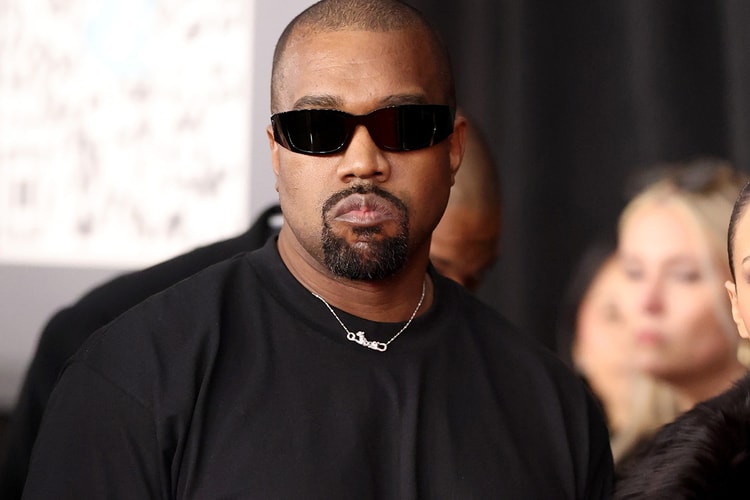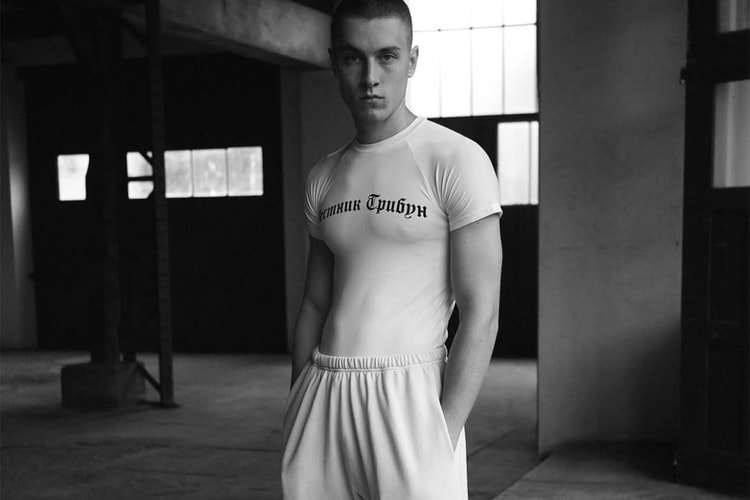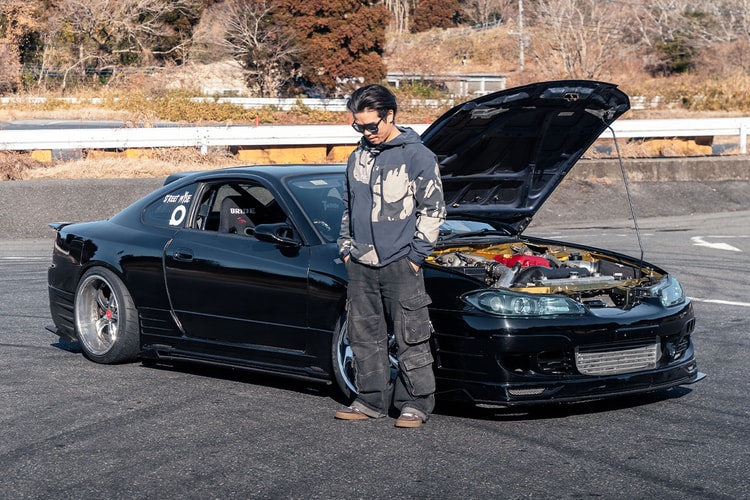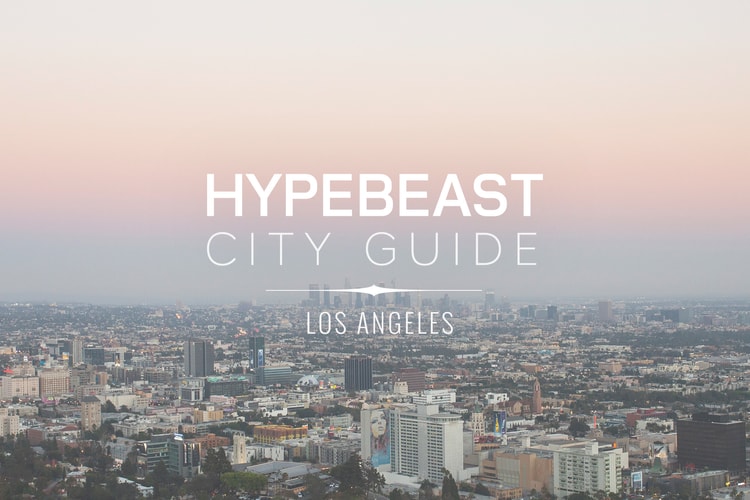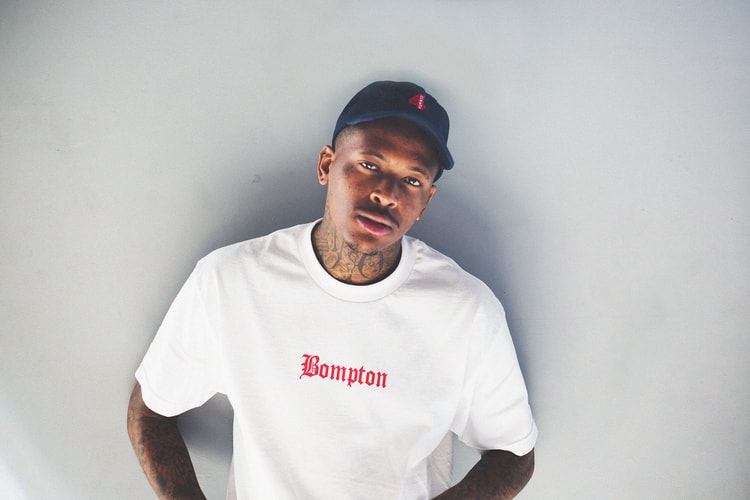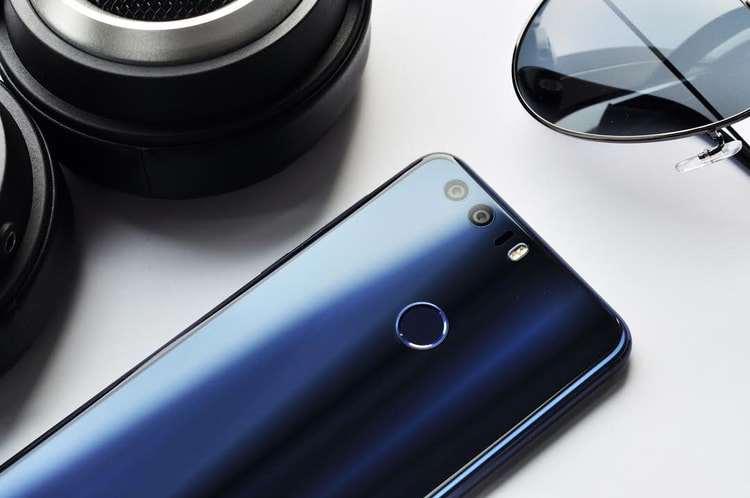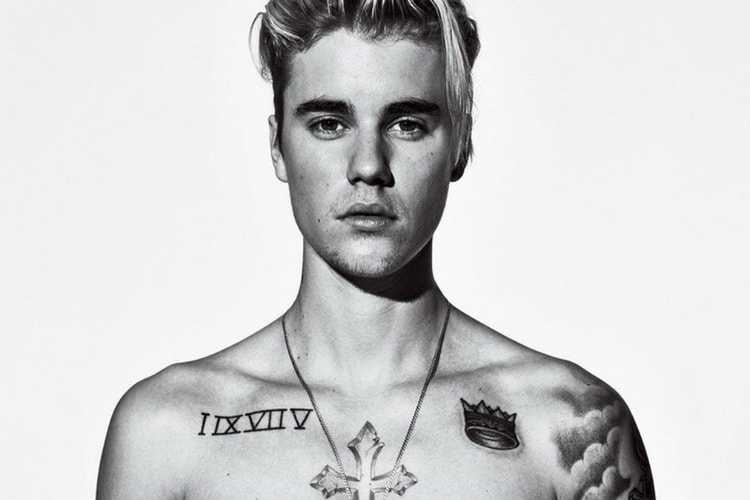Fashion Experts From Post-Soviet Russia Explain the Fundamentals of Gosha Rubchinskiy
In case you’re wondering why you’re seeing Kappa around again.
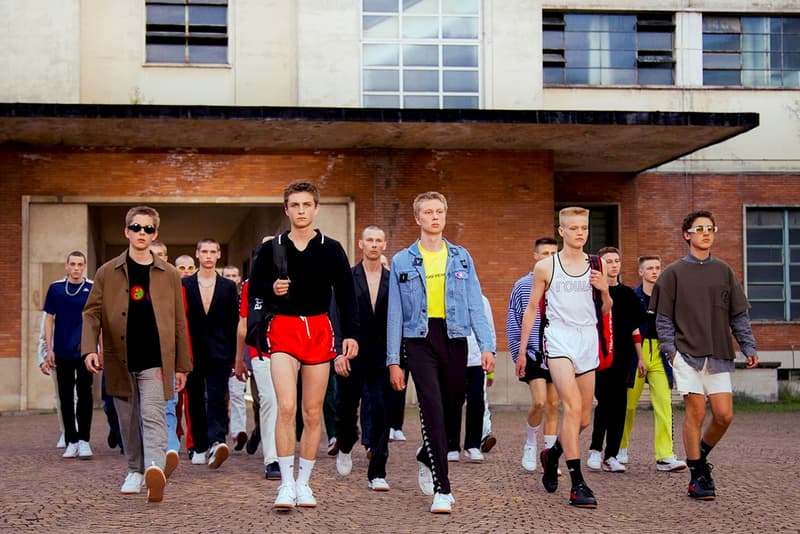
Perhaps one of the most talked-about brands at the moment is Vetements, which in addition to reappropriating nostalgic pop culture and working class aesthetic, has also been leveraging a lot of its design cues from Soviet Russia. Not an easy era of fashion to introduce into the mainstream, however if it weren’t for Gosha Rubchinskiy paving the way, people wouldn’t have been as ready for it as they are now.
Rubchinskiy, who was born in Russia and raised on skate culture, found his way into fashion first through photography. Shortly after, he began producing graphic T-shirts by hand for friends and locals which garnered his initial following. With the right international attention at his first show, the demand for Gosha Rubchinskiy grew faster than he could prepare for. Russian customs were naturally strict and fabric prices were high, leaving the designer no choice but to put the brand on hiatus. After some struggle to keep things afloat, he saw a break; a Vogue Russia editor introduced him to COMME des GARÇONS president and Dover Street Market CEO, Adrien Joffe. Upon meeting, he told Business of Fashion:
“I’ve always loved Russia… When I met Gosha, I understood why I loved it so much. This whole post-Soviet movement of people free at last and wanting to launch artistic things — it appealed to me and I thought, ‘This is the guy I’ve been looking for.’”
At this point, Joffe offered to stock his collection at Dover Street Market, a gesture which should’ve been pivotal to the brand’s success but proved quite the opposite. Issues with customs and hefty production costs still loomed, leaving Rubchinskiy in debt this round. As a friend, mentor and business partner, Joffe volunteered to run the Rubchinskiy brand under COMME des GARÇONS, allowing the designer creative freedom while relieving him of the manufacturing and selling responsibilities.
Fast forward to present day and Gosha Rubchinskiy has overcome his rough come-up and become one of the more powerful hands progressing today’s fashion scene. His influence has reversed conventions, brought Vans to runways, and encouraged other creatives to look to Russia as a backdrop and place of inspiration. Most can admire the Russian wave happening right now, but unless you are from post-Soviet Russia, you may not totally understand why it’s so appealing to you – like Jaffe before meeting Rubchinskiy. In an effort to dig deeper, founder and head of buying at SVMOSCOW Tatyana Strekalovskaya, former Vogue Russia Stylist and Writer Liza Ostanina, and model Dima Dionesov explain the weight and context behind some of the fundamentals to Rubchinskiy’s work; from haircuts, choice of models, to high waistlines.

Shaved Heads, Spikey Hair and Mullets
Tatyana Strekalovskaya (Founder/Head of Buying at SVMOSCOW)
I think guys with shaved heads represent the look of typical Russian guys from the ‘90s-’00s. They also remind us of “boys straight out of the Russian army” and “gopniki,” the so-called group of troubled men from the seedy suburbs who were usually not well-educated, aggressive and involved in criminal activities. Their image is widely used in Russian pop culture and lately became a point of reference in fashion language too.
Liza Ostanina (Freelance Writer and Stylist, Previously Vogue Russia)
Mullets were fashionable in late ‘80s-early ‘90s, many Russian pop singers were wearing this haircut. There was also a hairstyle called “ploshadka” (площадка). It had short sides and a straight cut on top. This style was popular in the military community, most of the higher ranking were wearing it while young soldiers were cut bald or down to 3mm.
Dima Dionesov (Model at Rad Models Management)
The style of shaved heads originates from the USSR collapse, in the ’90s. Teenagers were living on the streets and they had to “earn credibility” amongst their fellows, so that became a signature look at that time. Bald heads were a symbol of fearlessness and freedom from any rules or ideas.

Mismatching of Menswear with Sportswear and Workwear
Tatyana Strekalovskaya
I think it’s about the reality of the 1980s and 1990s. In Russia, people literally didn’t have anything to wear because the stores were empty — it was called a deficit. You had to stand in a queue for hours or days to get any goods, especially clothes, which weren’t considered a necessity. Everyone who was wearing decent clothes was considered lucky. In most cases, if you got clothes from these stores, the sizes and styles were off, because you didn’t really have a choice. It was also normal to wear “hand-me-down” clothes that your parents or older siblings wore, even if it wasn’t your size.
Liza Ostanina
In ‘90s Russia, men didn’t have much style because it was so hard to get clothes. They wore the best they had and didn’t think much about mixing genres. It was normal to see men in fake adidas track pants from “rynok” (market) mixed with classic shoes and “barsetka” (leather small bag every “real” Russian man should have). Even now if you go to the suburbs I’m sure there are guys in tracksuit and classical leather shoes; net tank tops (also recreated by Gosha in SS16) with gold chains.
Dima Dionesov
I think that was particularly associated with the time when guys were spending more time on the streets than anywhere else. They didn’t try to show off in front of each other and they wore what was in their so-called “wardrobe” (it was very inappropriate to call it a wardrobe during that period). I, as a child of ’90s, remember clearly that there was nothing to wear, no choice of clothes and shops. Not like now. There was nothing but old sportswear and pieces of my father’s uniform from some steel factory. Teenagers had “to create a style” from what they had, and no one was even complaining about the poor situation. That’s how half of the country used to live, which wasn’t something bad or terrible. Especially for me since I have two older brothers, so I was lucky, I had two brothers’ clothes to pick from.

Turtlenecks
Tatyana Strekalovskaya
Turtlenecks were really hard-to-get pieces, so they were a sign of luxury. They became a significant piece as different style icons of those times like Vladimir Vysotsky and Mikhail Boyarsky always wore them. Later when the economy became more stable, turtlenecks became an essential daily article of clothing because, last but not the least, they cover and protect the throat in harsh Russian weather.
Liza Ostanina
Well there is not that much about the turtleneck in Russia. Many men and women were wearing the same oversized models in ‘90s but it was just a piece of ‘90s-‘80s fashion in a global way.
Dima Dionesov
Oh, turtlenecks!! This is the most favored piece by Russian people, even today! Well, first, because most of the country does not live in the warmest of climates. Secondly, the turtleneck is the quickest and easiest option for any occasion. Especially black ones — even at work, school, for a jazz concert, or for a wedding. Russian people are very practical. And yes, one black turtleneck is good. Two is better, in case the first is washed.

Vintage Sportswear Appropriation and Collaborations With FILA, Kappa, Reebok and Sergio Tacchini
Tatyana Strekalovskaya
Those brands were really rare and desirable in the ‘80s and ‘90s when we didn’t know about fashion labels like Chanel or Dior since the country was closed off. The only way to get them was to buy from resellers who bought those brands abroad and sold them at a significant markup. I personally had a blue FILA tracksuit, and everyone around was dreaming about having the same one. When Russians who grew up in the ‘90s saw the SS17 show, they remembered their 20s and obsession with Kappa and Reebok. For Gosha it’s important to channel his connection to streetwear/sportswear and move it forward. The idea of using these brands is clever and humorous in this sense, I think.
Liza Ostanina
Any kind of collaboration is cool nowadays and I think it’s more about business not representation. Of course, Gosha chooses smart collaborations and began with sneakers like Vans (as he was first inspired the most by the skateboard scene) and Reebok (very popular in Russia, he’s recreated some vintage ‘90s models). Joining forces with brands like FILA and Kappa might be cool because these are legendary brands which lost their hype for a while. I’m sure Gosha can make everyone wear their old FILA hats and Kappa jackets again.
Dima Dionesov
Sportswear for Russian men plays an essential role. How tragic does that sound! Today, for example in the village where I was born, people prefer sports suits of course, if there are no turtlenecks. And if there are both turtlenecks and sports suits, it is kinda chic (imagine putting them together). Fashion triumph!!! It would be funny, if it were not so sad. And in fact, the “mode” comes from China, inspiring tons of sportswear in Russia, like “Abibas,” “Reebak” or “Fuma.” And they are so fond of the Russian people, it became an integral part of Russian “style.” Note that the increasing availability of European or American brands on the Russian Market, helped to gradually move away from the desire to wear Chinese copies.

Deliberate Oversizing
Tatyana Strekalovskaya
I think it’s mainly a trick Gosha uses in his runway shows in terms of styling to refer to times/images which inspired him. Another thing is that his models are really tiny and even M/L sizes are kind of oversized for them. But when you order the collection in a showroom you find out that the clothes can hardly be called oversized – they’re just normal fits.
Liza Ostanina
In early ‘90s Russia everything was oversized. I remember my mom wearing jackets with huge shoulders (very Vetements) and my dad wearing neon fluorescent sport jackets, like Gosha showed in SS16. This was because there was a lack of foreign clothes and you took any size you could get. It was also part of ’80s fashion, where you sew extra shoulder straps to make the jacket bigger. Pants were also wide and tied by belts or laces.
Dima Dionesov
It’s a funny question. I guess Gosha is simply reflecting the style from those times, when teenagers were effortless. It is a culture. It’s just subconsciously how people interpret something as trendy nowadays. Think about it, fashion is always recycling what’s old to new, and that’s just one style people don’t dare to include in their highly produced runway shows.

Cyrillic Lettering
Tatyana Strekalovskaya
First of all, Gosha is Russian and he’s a patriot. He speaks Russian and this language helps him to express his vision and his thoughts. He made Cyrillic letters a trend but, in my opinion, this is just based on how he feels.
Liza Ostanina
Every collection has its own symbols and quotes and it’s not just some Cyrillic letters. In the last one he used the phrase “Русский Ренессанс” (Russian Renaissance). I don’t really know if this is really the reason, but this was an Instagram name of one of his muses from the movie The Day of My Death. In 2016 fall/winter the main phrase is “Спаси и Сохрани” (Bless and Save) written in orthodox type. This phrase is from Russian orthodox church and can be found inside them and on most icons. Many Russians were also wearing a silver ring with that phrase written on it as a talisman from bad luck. He also recreates his logo in most of his collections by writing “Гоша Рубчинский” in different scripts.
Dima Dionesov
Well, everyone’s already tired of banal Latin letters on every corner. Cyrillic letters looks beautiful, even if for many people it’s very difficult to understand. And also (as in the case of Gosha), if you push a specifically Russian brand or Russian style, it makes sense to use Russian inscription… Гоша Рубчинский in English is as ridiculous as if Matryoshka would be dressed in the American flag or an “Abibas” suit.

High-Waisted Pants
Tatyana Strekalovskaya
High-waisted bottoms were extremely popular in the ‘80s and ‘90s, thanks to Western influence. Everyone was crazy about so-called ‘varenki,’ high-waisted washed denim pants. This could have influenced Gosha too, but also it’s about comfort for men, and a play on proportions and size we mentioned earlier.
Liza Ostanina
Everyone in Russia in the ‘90s was wearing high-waisted trousers, whether it was the track pants or the oversized classic ones. Track pants were tied on a waist with a T-shirt tucked in, same with the classic trousers, but most of the men used a thin belt.
Dima Dionesov
High-waisted men’s trousers are an opportunity to “emphasize” the manhood, as funny as it may sound. Well, I think so. What about the cut off/torn pants and ripped jeans? It is something American, I think, but in Russia the ripped jeans cause a “storm of indignation” among elder people.

Obsession With Youth
Tatyana Strekalovskaya
Models who appear in Gosha’s shows and lookbooks are usually his friends from Moscow. They’re normal guys with whom he spends his free time — skaters, artists, musicians, etc. Many of these guys were broke in the past and couldn’t even buy food, but Gosha was there to buy them tons of McDonald’s even though he was broke too. He always used to cast his friends as models and later he even brought them to France to take part in a show for Paris Fashion Week.
Liza Ostanina
Gosha has always been inspired by the youth and invited young boys for the most of his lookbooks from the first collections. Some of his permanent muses like skater Kolya Titaev are more than 20 but most of the models are less than 18. It’s about both aesthetics and the inspirations from the skate culture which is for young people.
Dima Dionesov
I don’t want to say that most of the men who are designers are pedophiles; no, I hope not. For designers each season, it is just easier to recruit new young faces for their shows than working constantly with experienced and more professional models. It is cheaper and easier to work with the naive boys, and forget them the next season. It’s sad. Now any guy can call themselves a “model” as long as they don’t look like one, without experiencing the reality of a “model’s life.” They feel like a “star” today, and tomorrow they are nothing. I hope that the situation will change soon. Designers and casting directors will hopefully be more conscious of their selection of models, and stop choosing the ordinary boys from the gateway, because they have no idea how much it will affect the whole industry.



